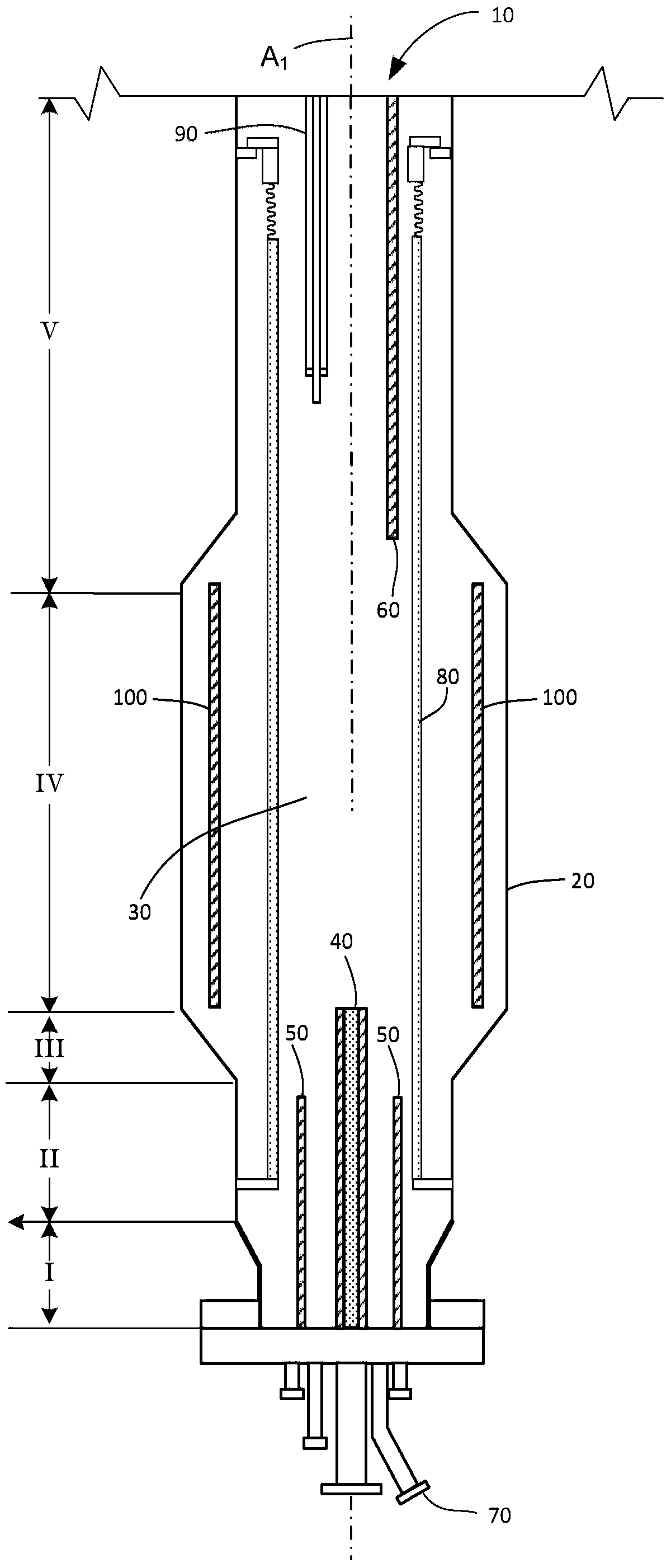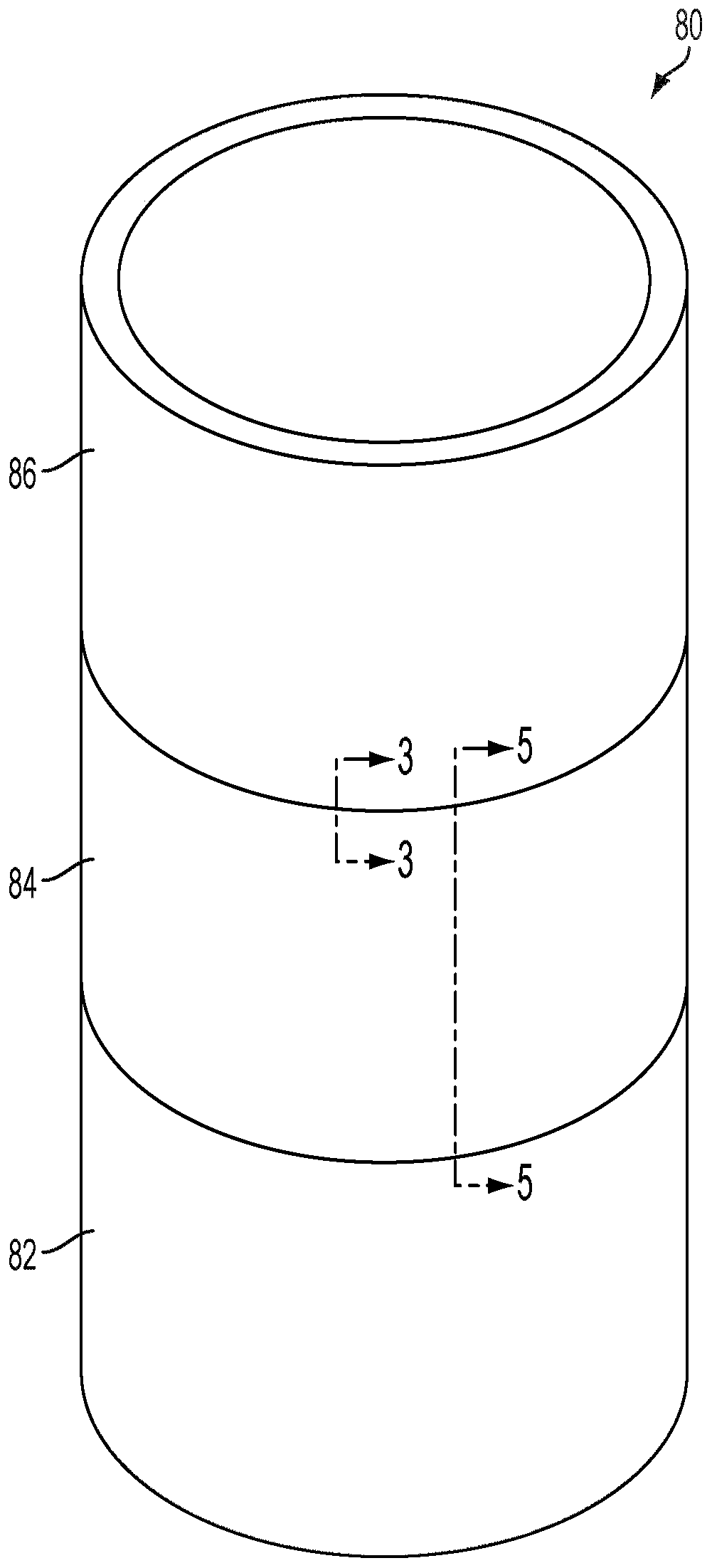Contamination-free bonding material for segmented silicon carbide linings in fluidized bed reactors
A technology for fluidized bed reactors and bonding materials, applied in fluidized bed furnaces, silicon compounds, chemical instruments and methods, etc., can solve problems such as material pollution
- Summary
- Abstract
- Description
- Claims
- Application Information
AI Technical Summary
Problems solved by technology
Method used
Image
Examples
preparation example Construction
[0111] VI. Fabrication of Segmented SiC Liners
[0112] Two silicon carbide segments are joined by applying an adhesive material disclosed herein to at least a portion of an edge surface of a first silicon carbide segment to form a clad edge surface. joining at least a portion of an edge surface of the first silicon carbide segment to at least a portion of an edge surface of the second silicon carbide segment, wherein at least a portion of an adhesive material is placed between the first silicon carbide segment and the second silicon carbide segment between adjacent edge surfaces. Heat is then applied to the bonded material to form bonded first and second silicon carbide segments. Heating may be performed in an atmosphere substantially free of hydrocarbons, such as air or nitrogen. Embodiments of the bonding material of the present disclosure form sufficient bonds upon heating without the need for a cooling step.
[0113] In some examples, an adhesive material is applied to...
Embodiment 1
[0121] Evaluation of Adhesive Materials
[0122] Bonding materials based on potassium and lithium silicates are commercially available, such as Ceramabond 890-K and 890-L, where K and L refer to potassium and lithium, respectively (Aremco Products, Inc., Valley Cottage, NY ). Both bonding materials include fine silicon carbide particles as filler and aluminosilicate as thickener. Adhesive materials are available as pre-mixed slurries.
[0123] Mix each bonding material well before use by shaking for 5 minutes or stirring with a mechanical stirrer. Clean the surface of the silicon carbide joint with a metal brush and wipe it with a clean cloth. Use a spatula to apply the bonding material to the mating pin and box (ie tongue and groove joint). Wipe off excess adhesive material. Typically, 3 pairs of silicon carbide segments (5-8 cm long) were tested per set of conditions to ensure repeatability. Press and clamp the male and female fittings together. The clamped joints wer...
PUM
 Login to View More
Login to View More Abstract
Description
Claims
Application Information
 Login to View More
Login to View More - R&D
- Intellectual Property
- Life Sciences
- Materials
- Tech Scout
- Unparalleled Data Quality
- Higher Quality Content
- 60% Fewer Hallucinations
Browse by: Latest US Patents, China's latest patents, Technical Efficacy Thesaurus, Application Domain, Technology Topic, Popular Technical Reports.
© 2025 PatSnap. All rights reserved.Legal|Privacy policy|Modern Slavery Act Transparency Statement|Sitemap|About US| Contact US: help@patsnap.com



